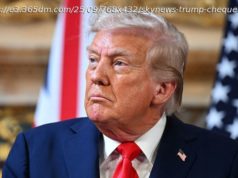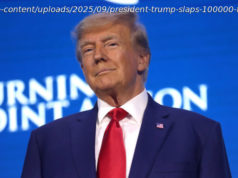It’s a shame—ours and his.
In the first novel ever written about Sherlock Homes, we learn something peculiar about the London detective. Holmes, supposedly a modern man and a keen expert in the workings of the world, does not know how the solar system works. Specifically he is unfamiliar with the heliocentric Copernican model, which, upon its slow acceptance in the 17th century, revolutionized Western thought about the place of our species in the universe.
“What the deuce is it to me?” Holmes asks his sputtering soon-to-be sidekick, Dr. Watson. “You say that we go ’round the sun. If we went round the moon it would not make a pennyworth of difference to me or to my work.”
Brains are a kind of “little empty attic,” says the detective, and they should be filled only with furniture that’s useful to one’s line of work. Holmes doesn’t doubt the Copernican model; he simply has no use for it in solving murder cases. “Now that I do know it,” he adds, “I shall do my best to forget it.”
Thursday night, as record lows gripped most of the country’s northern half, President Trump clarified that he does not understand another revolution in our knowledge of the natural order of things: the theory of human-driven climate change.
In the East, it could be the COLDEST New Year’s Eve on record. Perhaps we could use a little bit of that good old Global Warming that our Country, but not other countries, was going to pay TRILLIONS OF DOLLARS to protect against. Bundle up!
Trump is wrong about the science—I’ll get to that in a moment—but, first, let’s not mince words: The president is trolling here. Pointing to cold weather and asking Whither climate change? is, by this point, almost a Republican tradition. In February 2015, Senator James Inhofe of Oklahoma brought a snowball inside the Senate chambers to demonstrate that global warming was not real. “It’s very, very cold out. Very unseasonable,” said Inhofe, then the chairman of the Environment and Public Works Committee. “In case we have forgotten because we keep hearing that 2014 has been the warmest year on record.”
Despite the snowball, 2014 was the warmest year on record. It was followed by 2015, which broke 2014’s record and became the new hottest year on record; and 2016, which became the new hottest year after it blasted away 2015’s record. Though this year is not yet over, NASA estimates that 2017 will also beat 2015’s record and become the second-hottest year ever recorded. And even if this late cold snap averts that dreadful streak, 2017 will still break 2014’s record. We have just lived through what would be, in any other decade, the warmest year ever measured.
Perhaps Trump has forgotten that his native New York suffered three heat waves by late July this year, or that a “normal” summer now would count as a “hot” summer during the 20th century. Scorching temperatures have vanished not because global warming has stopped, but because it is the winter, which every preschooler knows as the “cold season.” Six months after hurricane season ends, Floridians do not ask where the tropical cyclones have gone; cable-news pundits do not spend time every night debating whether the sun will rise the next morning, though that would be preferable to what is currently aired.
And there is, in fact, a connection between global warming and the current frigid weather across the United States. Spend some time clicking around the Climate Reanalyzer —a fantastic tool from the University of Maine—and you’ll see that the northern half of North America is the only part of the world where temperatures are significantly colder right now than normal. Moscow, Russia, is normally about 24 degrees Fahrenheit this time of year; it’s currently pushing 40. The Arctic as a whole is more than 5 degrees Fahrenheit above normal.
Nor is this phenomenon limited to exotic capitals. Los Angeles has an average high of 68 degrees Fahrenheit on December 29. Today it hit 82.
It’s not too much of an exaggeration to say it’s warmer than normal almost everywhere right now except for Canada and the northern United States. What no one should tell the president is that this pattern may not be due to random chance—it seems to arise from global climate change.
For the past decade or so, climate scientists have noticed that when the Arctic has an especially warm winter, the northern continents become especially cold and snowy. A plethora of studies in the past three years have seemed to confirm the connection: When the Arctic is extremely warm, it seems to loose cold air across the world, and northern North America suffers an extremely cold winter. Why? Scientists aren’t sure yet, but they think it may arise from a destabilized jet stream or a weakened stratospheric polar vortex.
Just this past July, a team of researchers found that frigid winters, driven by a warm Arctic, were already reducing the productivity of American agriculture. They estimated that this warming has already cost Texas a 20 percent decline in corn production for some years.
Suffice it to say: There is plenty of evidence that climate change is still at work, even in a week as chilling as this one. But does the president really need to understand all this stuff? Perhaps if he had remained in real-estate development, he could have remained cheerfully ignorant. His line of work would never have touched the theory of human-driven climate change— outside of the occasional application for government money to protect a golf course from sea-level rise.
But unfortunately for Americans—and quite unlike the good detective of 221B Baker Street—Trump’s line of work has brought him frequently and directly into contact with climate science. During his year in office, he has made decision after decision that turns on a nuanced understanding of global warming. He has withdrawn the United States from the Paris Agreement on climate change. He has revoked a slew of Obama-era policies meant to stem greenhouse-gas emissions. He has repealed the Clean Power Plan, a landmark rule that would have made the United States grid less reliant on coal. And he has declined to seek any kind of climate-protecting measure in the new GOP tax bill, despite the many alumni of the Reagan administration pleading for it.
People of good faith can disagree about the legality, effectiveness, and wisdom of any of these individual policies—and they do. But Trump has attacked the policies collectively and with great gusto, while declining to ever actually learn about the underlying scientific evidence.
Meanwhile, he sits atop the science agencies of the U. S. government, some of the best scientific institutions ever constructed. Last month, his own administration released the Climate Science Special Report, a product of 13 federal agencies and itself the best scientific synopsis of climate change in years.
It seemed to address exactly his concern. “The number of high temperature records set in the past two decades far exceeds the number of low temperature records,” its authors said, with the highest confidence possible.






